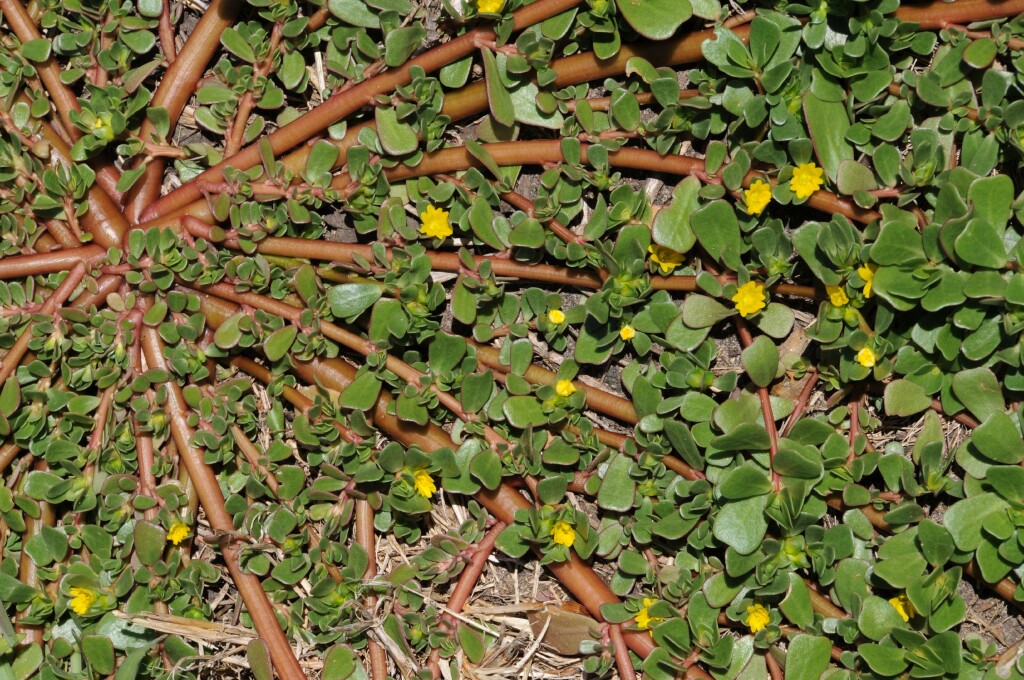Portulacaceae
Annual or perennial herbs, often with a thickened taproot, glabrous or with axillary hairs. Leaves alternate, rarely opposite, usually sessile, simple, more or less fleshy; stipules absent. Inflorescence a terminal head-like cymose panicle. Flowers bisexual; sepals 2, fused at base; petals usually 5, fused at base; stamens usually numerous; ovary semi-inferior, 1 locular; ovules numerous; style cleft into 3–7 stigmatic arms. Fruit a circumsciss capsule.
1 genus with 116 species, worldwide, more common in tropic and subtropic regions.
A phylogenetic study of Portulacineae has found Victorian genera previously included in this family (i.e. Claytonia, Montia and Calandrinia) to be better placed in a separate family, Montiaceae (Nyffeler & Eggli 2010).
Walsh, N.G. (1996). Portulacaceae. In: Walsh, N.G.; Entwisle, T.J., Flora of Victoria Vol. 3, Dicotyledons Winteraceae to Myrtaceae, pp. 215–224. Inkata Press, Melbourne.
 Spinning
Spinning


